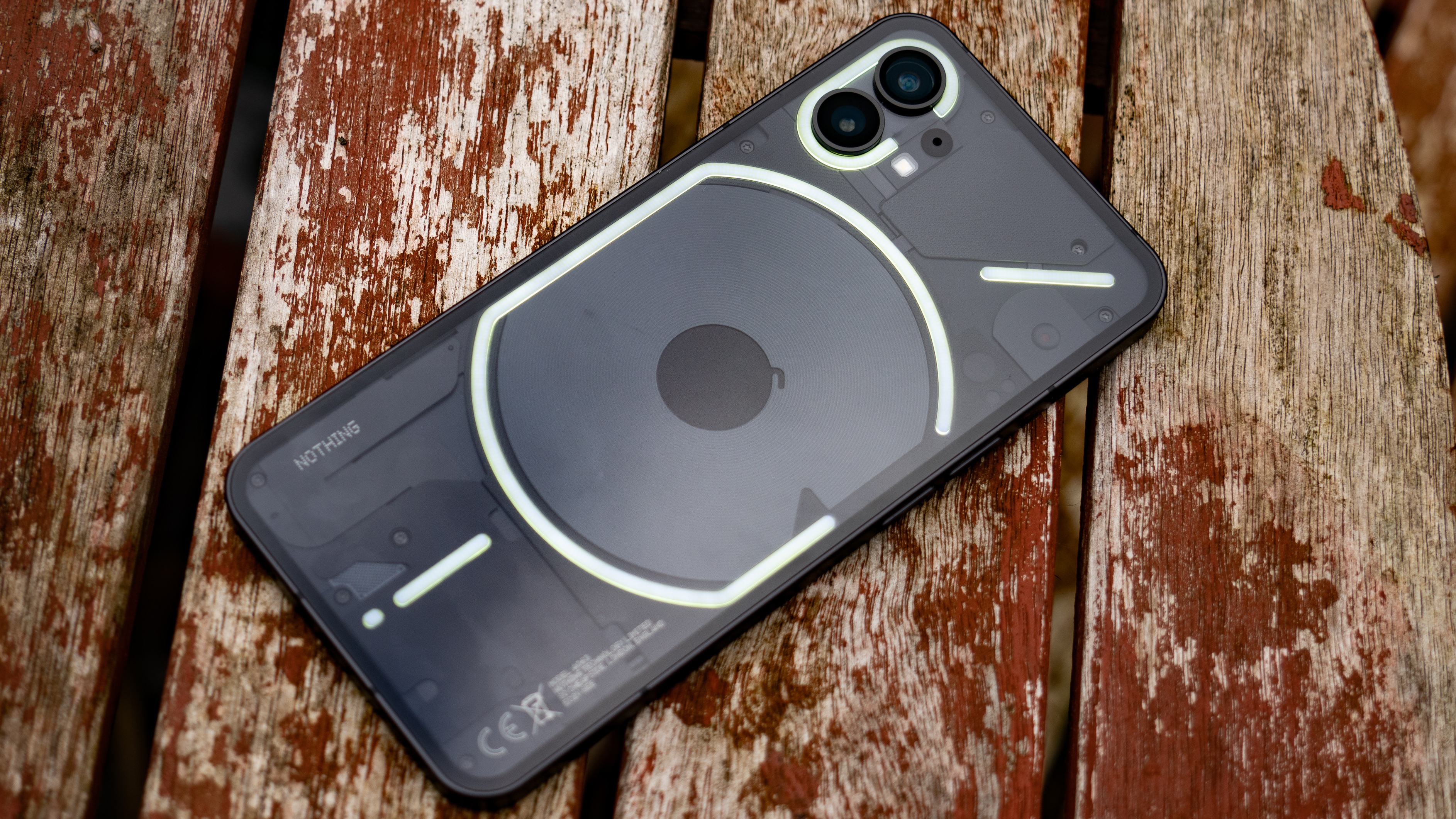Our Verdict
The slate form factor is so embedded in the smartphone market that just about every phone looks the same. The Nothing Phone 1 does its best to mix things up in the looks department, and largely succeeds - there's nothing else quite like it, even if it is another black rectangle. The phone is responsive, well-specced, and does everything you ask of it, the camera produces some nicely sharp images, and while the battery life is decidedly average, this doesn’t completely let down a nicely rounded package.
For
- Looks fantastic
- Good specs
- Plenty of storage
Against
- Average battery life
- No telephoto camera
- Fingerprints love it
Why you can trust Creative Bloq
The Nothing Phone 1, stylised as (1), is a striking Android smartphone with a transparent casing and decent specs. Not exactly a household name, the company was founded by one of the originators of OnePlus, and partners with Swedish electronics company Teenage Engineering for the design of its products. So far, it has released one (1) set of wireless earbuds, and one (1) phone.
With a 6.5in SuperAMOLED HDR screen that crams in 1080x2400px (a 9:20 aspect ratio and 401ppi) and a variable refresh rate up to 120Hz, plus 50MP cameras and a multi-core Snapdragon chipset, this is a phone that can take on the best Android flagships, even stick it to some of the best smartphones out there and a camera that rivals some of the best camera phones on sale, but one (1) question remains: is Nothing really something?
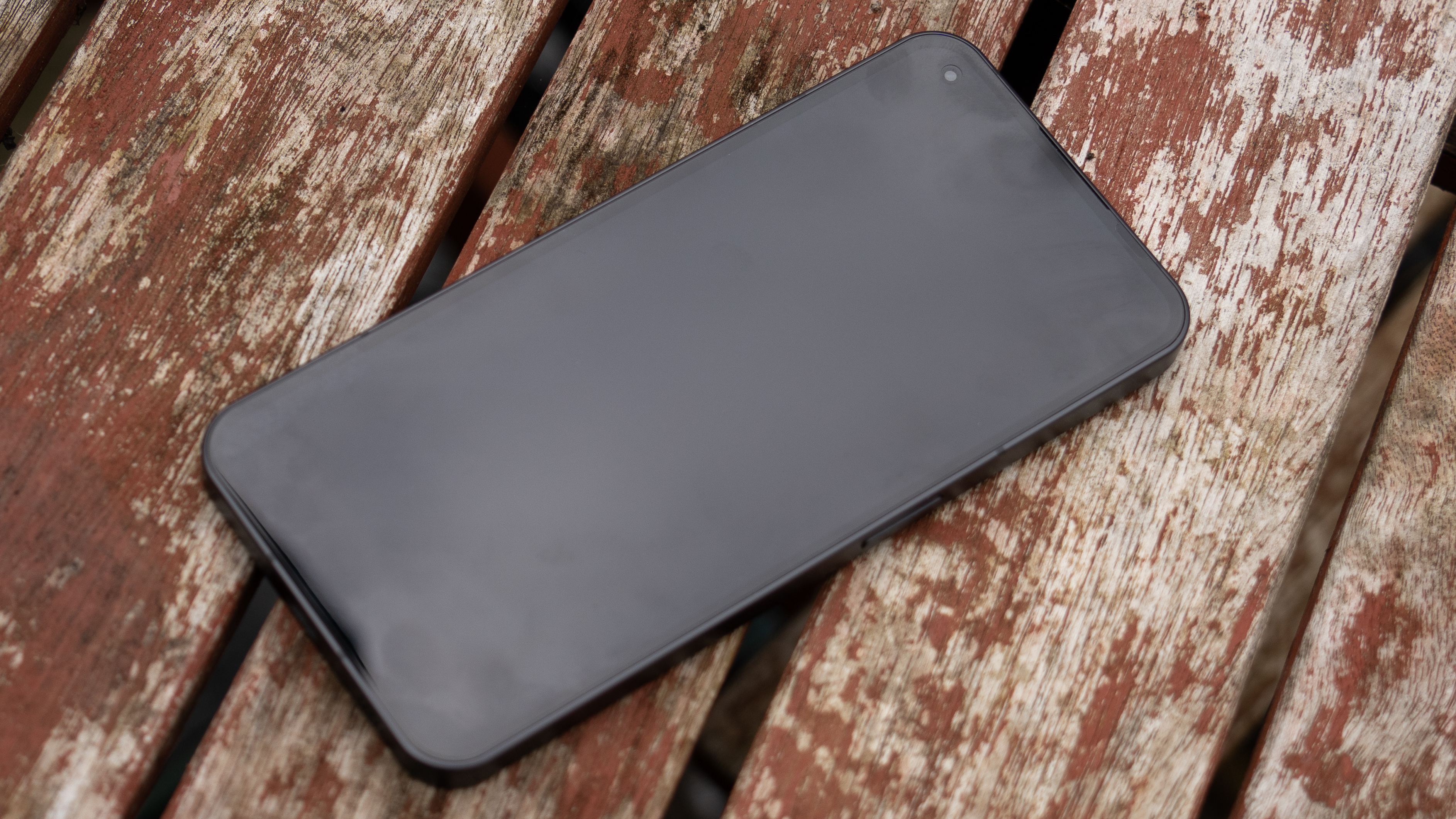
Nothing Phone 1: Design and screen
Before we get to the phone we need to address the packaging. Could Nothing have outdone Apple here? The box is black and slender - there's no way a charger is going to fit in there - and opens with a pull tab that rips all the way around the perimeter, allowing the end to fall off. Inside, the phone and a box of bits and pieces sit side by side, both accessible via another tab you pull toward you. It’s elegant and feels premium, while having the lifetime carbon footprint of the device printed on the label is also a nice touch.
Get the Phone 1 out of the box and switch it on, and its design flourishes make themselves known. While the flat sides are reminiscent of a large iPhone 4, the Nothing logo, with letters made up of dots, and the transparent back of the phone are quite distinctive. The phone is available in three RAM/storage variants: 8GB / 128GB, 8GB / 256GB, and 12GB / 256GB, which is the one we’ve been sent for review. The price is reasonable, at around £500/$600 for the most expensive model.
As for its looks, the iPhone 4 is a classic for a reason. The slab sides are broken only by a USB-C port, a single speaker grille, and large buttons that don’t protrude too much. The transparent back features two camera lenses, and the front-facing camera is a hole-punch at the top left. The fingerprint scanner is under the screen, while holes for a mic and the SIM tray release are barely noticeable at the top and bottom.
The clear Gorilla glass of the rear of the phone means Nothing has taken the opportunity to bury some LEDs in the device’s guts, known as the Glyph, and these can be configured as notification lights that produce anything from Blackpool Illuminations levels of brightness to a subtle blink. Perfect for use in silent mode, and with a setting that switches them off at night, they do rather prevent you from keeping the handset in a protective case. Happily, Nothing makes a clear one that helps keep fingerprints off. Sadly, when activating the phone’s torch mode, only the camera flash lights up, but you can use the Glyph as a fill light for the camera.
The buttons are positioned with the volume rocker on the left and the lock button on the right, the same way around as OnePlus phones (though missing that brand’s distinctive hardware switch for activating silent mode) and a change from Google and Samsung, who put all buttons on the right of the device as you look at it. They’re tactile and easy to press, and the whole unit feels good in the hand.
The screen is notable for its support of HDR10+, and for the benefits that come with its OLED technology. It’s bright and colourful, though a great many of its virtues are likely to be lost when using it in a bright environment. The display appears to be right on top of the phone, with no raised area around it, and the viewing angle is excellent. If you’re in the habit of watching HDR content from Netflix at an oblique angle while in a brightly lit room, it won’t let you down. There's no headphone jack, however, so you might want to invest in some Bluetooth earphones to avoid using the built-in speaker.
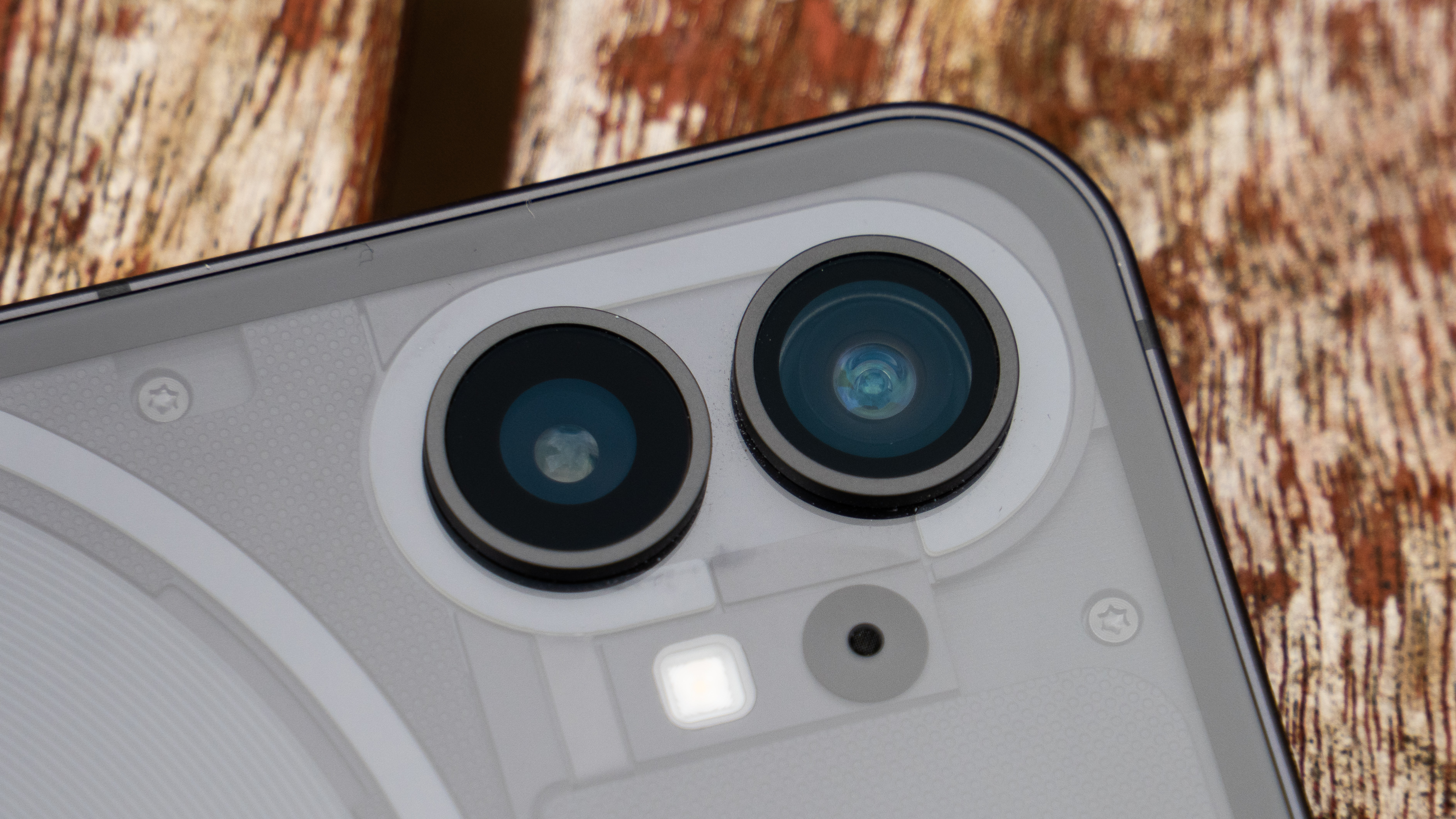
Nothing Phone 1: Camera
Phone camera sensors are tiny, and 50MP is a lot to squeeze into that space, raising worries about noise. The images are scaled down to 12.5MP when saved, which helps reduce the visible noise. We were lucky enough to get the Nothing Phone 1 just after a software update that improved colour calibration and motion detection, so hopefully, we should be seeing the cameras at their best.
There are two actual cameras, plus Android 12’s digital zoom mode that ekes a 2x image out of the main lens, which uses a Sony sensor and has a 24mm equivalent focal length, a maximum aperture of f/1.9, phase-detect autofocus and optical image stabilisation.
There's also an ultrawide camera, again 50MP, with an aperture of f/2.2 but a slightly smaller sensor than the primary lens. Its FOV of 114° puts its equivalent focal length around 11mm, so it’s really wide, but suffers from the distortion often seen in ultrawide images.
Video goes all the way up to 4K 30FPS, though if you want to record in HDR you’ll have to make do with 1080p. All the standard Android camera modes are present, with computational portrait mode blurring the background, macro mode allowing close-focusing, plus panoramas, bursts, slow-mo video and night mode.
On the front, there's a 16MP f/2.5 camera capable of 1080p 30FPS video. Expert Mode, which allows you to alter many photographic settings and save raw files, only works on the main camera.
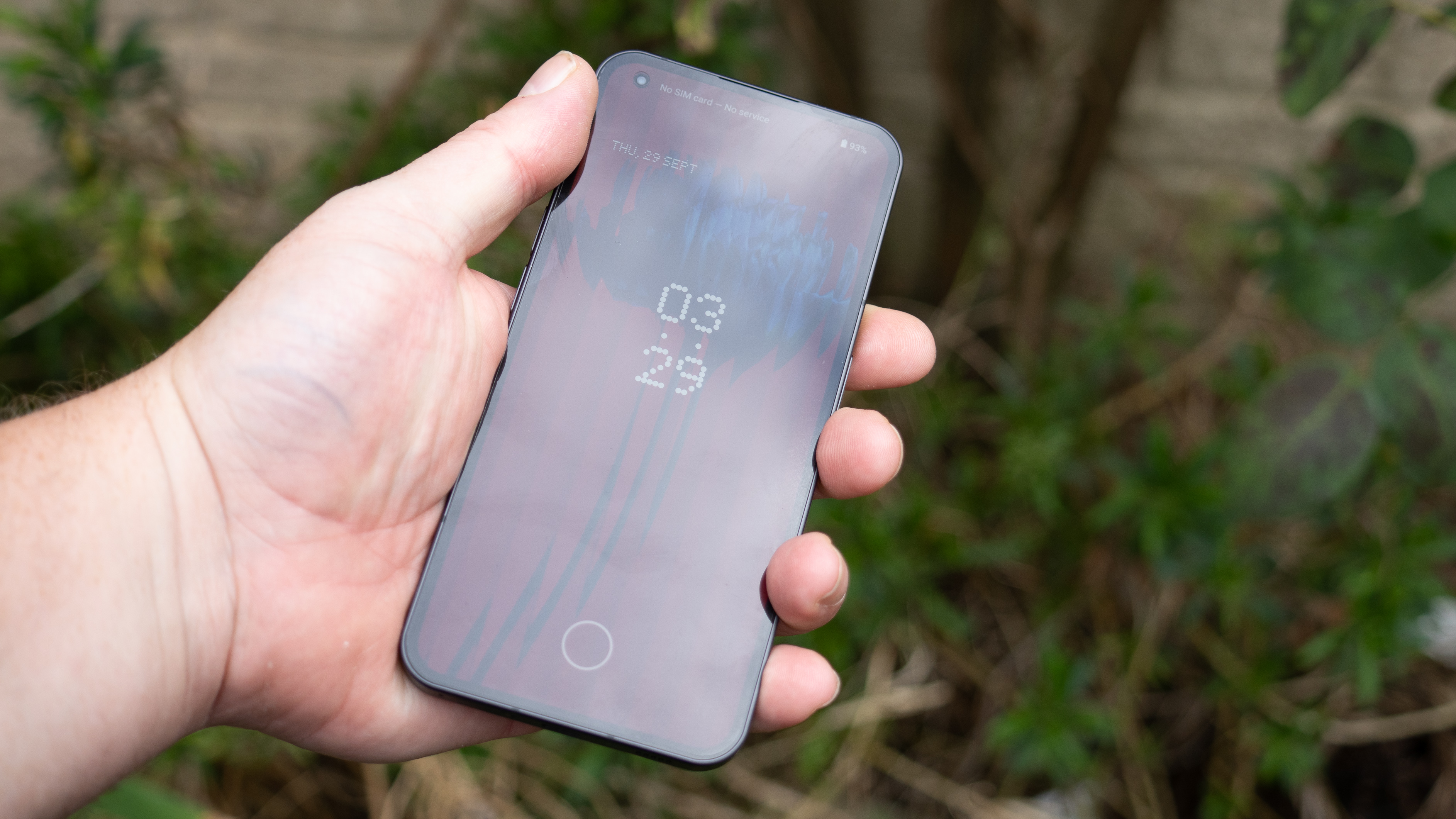
Nothing Phone 1: Performance and interface
The Nothing Phone 1 runs Android 12 (an Android 13 beta is promised for later in 2022), a mature and secure operating system. The Snapdragon 778G+ chipset is from the end of 2021 and also sits in the Honor 70 and Motorola Edge 30. It features eight CPU cores, four Cortex-A78 at 2.4GHz, and four Cortex-A55 cores at 1.8GHz in the big.LITTLE configuration that’s been in Android phones for years now. There's an Adreno 642L GPU and up to 12GB of LPDDR5 RAM.
It’s a versatile package, and we don’t expect any apps to have trouble running on it, but probably now counts as ‘mid-range’ following the launch of the Snapdragon 8 family, found in phones such as the Xperia 1 IV, Samsung Galaxy S22 Ultra and OnePlus 10T, which pushes core speeds to 3.2GHz and increases memory speeds too. Connectivity is handled by Bluetooth 5.2 and Wi-Fi 6, and there's 5G cellular data if your SIM card supports it.
The Glyph lights have their own section in the phone’s settings from which you can configure just how much you want them to light up when you get a notification.
Like many manufacturers, Nothing places a skin over stock Android. It’s not the most noticeable addition, as it amounts to little more than the dotted Nothing font, the Glyph settings, and a few custom wallpapers.
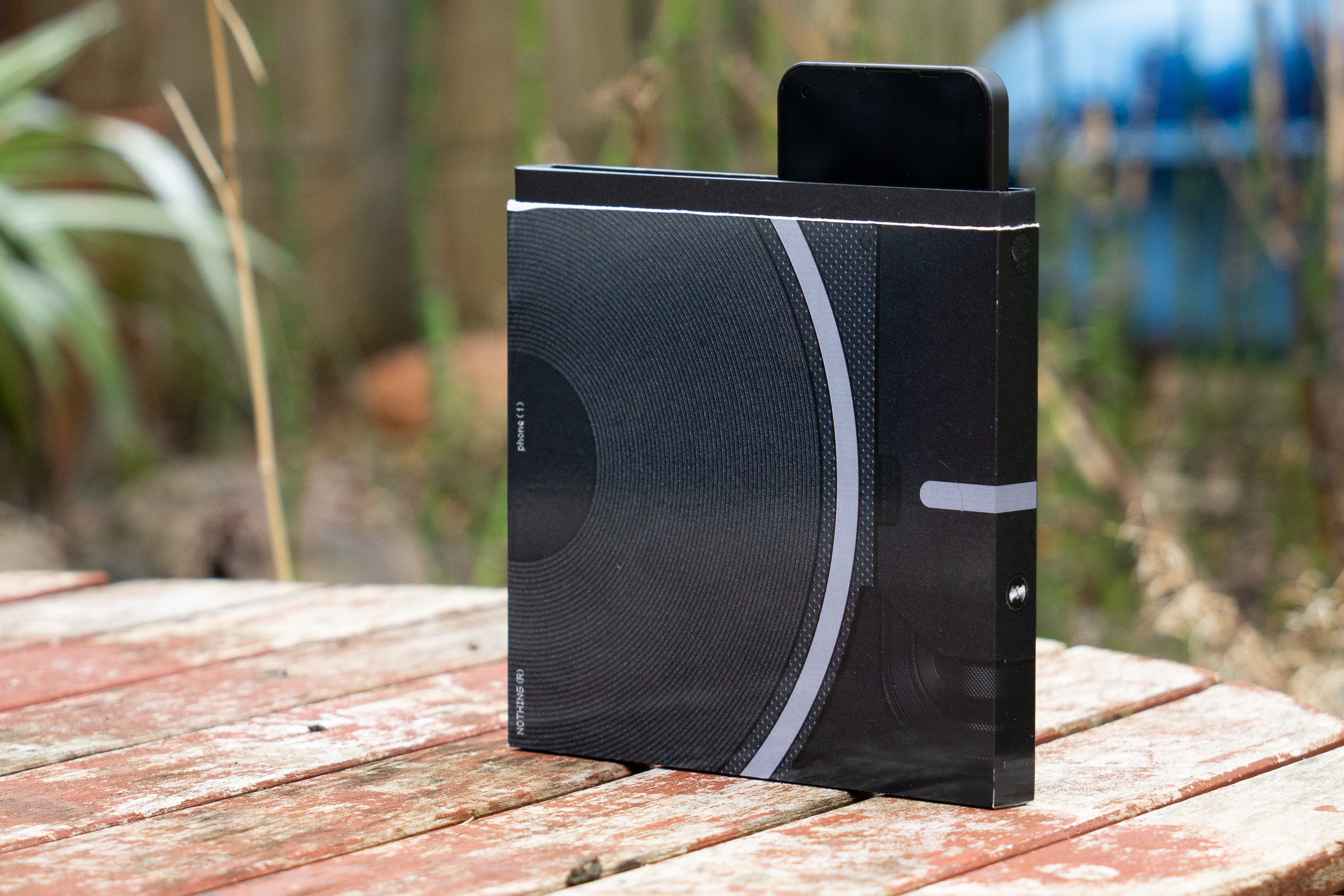
Nothing Phone 1: Battery life and charging
You’ll get a day out of the Nothing Phone 1, but to get much more than that you’ll need to indulge in power-saving heroics. The battery level drops quite slowly while the screen is switched off, but all those pixels and the high framerate take their toll, and using the screen at a high refresh rate eats into the available power.
Charging is fast, accepting 33W of energy via the USB-C port (Nothing does sell a charger, but there's only a C-to-C cable in the box) via Power Delivery 3 and Quick Charge 4. There's 15W of wireless charging via Qi, and the phone can give back 5W of energy to another device via wireless reverse charging.
Should you buy the Nothing Phone 1?
If you live in North America, you can’t. It’s not available there. In the UK, it’s exclusive to the O2 network, though SIM-free handsets are available on popular online shopping sites. If you’re in the market for a new Android phone, it’s a good choice, as it undercuts competitors from OnePlus, Google and Xiaomi while giving up very little in terms of performance.
Read more:

Thank you for reading 5 articles this month* Join now for unlimited access
Enjoy your first month for just £1 / $1 / €1
*Read 5 free articles per month without a subscription

Join now for unlimited access
Try first month for just £1 / $1 / €1
out of 10
The slate form factor is so embedded in the smartphone market that just about every phone looks the same. The Nothing Phone 1 does its best to mix things up in the looks department, and largely succeeds - there's nothing else quite like it, even if it is another black rectangle. The phone is responsive, well-specced, and does everything you ask of it, the camera produces some nicely sharp images, and while the battery life is decidedly average, this doesn’t completely let down a nicely rounded package.

Ian Evenden has been a journalist for over 20 years, starting in the days of QuarkXpress 4 and Photoshop 5. He now mainly works in Creative Cloud and Google Docs, but can always find a use for a powerful laptop or two. When not sweating over page layout or photo editing, you can find him peering at the stars or growing vegetables.
